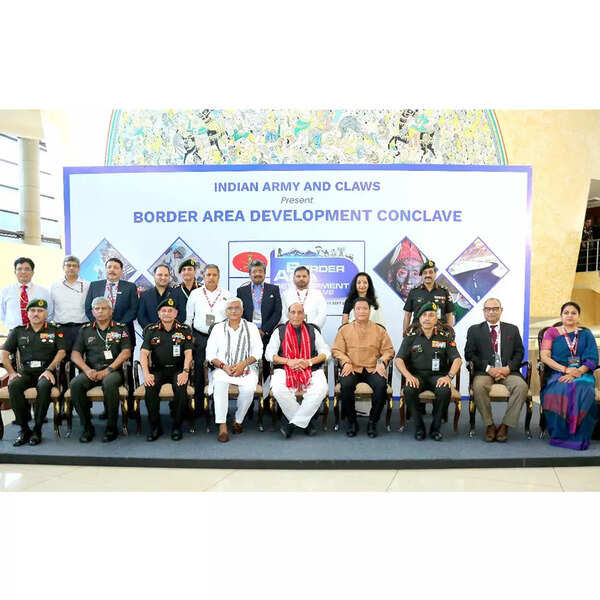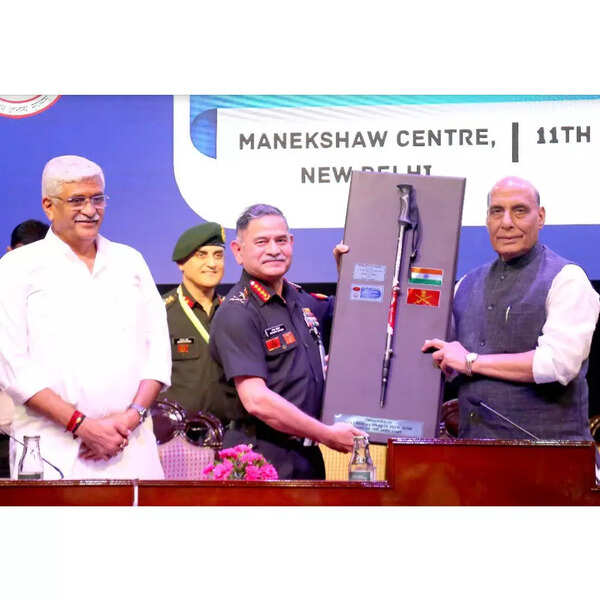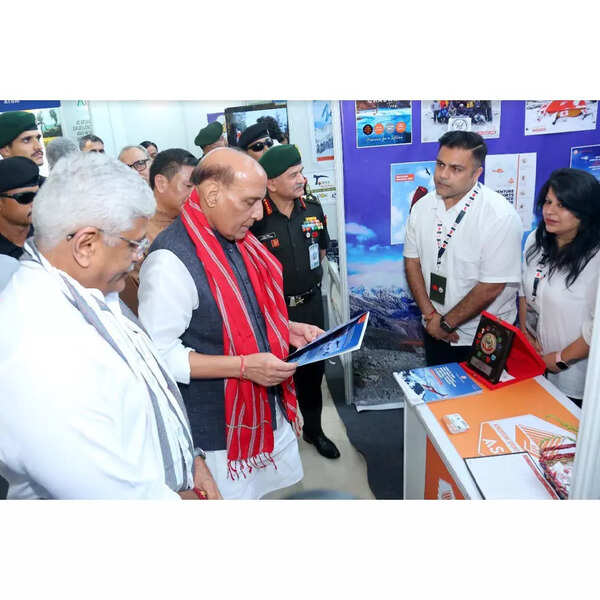Defence Minister of India Rajnath Singh has voiced Prime Minister Narendra Modi-led Government’s full commitment to the holistic development of border villages, describing them as the country’s first villages and not remote areas. Addressing the Border Area Development Conclave in New Delhi on September 11, 2024, the minister pointed out that India’s geo-strategic position is such that it is exposed to different kinds of challenges and the best way to deal with them is to ensure border area development.
Highlighting the progress achieved in border area development in the last 10 years, Rajnath Singh said: “Border Roads Organisation (BRO) has constructed over 8,500 kms of roads and more than 400 permanent bridges. Atal Tunnel, Sela Tunnel & Shikun-La Tunnel, which is going to be the world's highest tunnel, will prove to be milestones in border area development. Our Government has started the 220 Kilo-Volt Srinagar-Leh Electricity Line to connect the border areas of Ladakh with the National Electricity Grid. In addition, the transmission and distribution infrastructure of north-eastern states is being strengthened. High-speed internet has been provided to over 1,500 villages through the Bharat-Net broadband project. In the last four years alone, more than 7,000 border villages have been connected with internet connection, and our focus has been Ladakh and Arunachal Pradesh.”
Describing roads and electricity as basic facilities that form the foundation of development of any region, the minister reiterated the Government’s unwavering resolve to ensure progress in every corner of the country. He stated that the ongoing efforts have not only ensured prompt military deployments in sensitive regions, but have also connected the people residing in border areas with the rest of the country. He underlined that while building roads, bridges and tunnels in border areas is imperative for national security, it is also important in making the lives of the people in these regions better, in collaboration with the state governments.
Singh emphasised that the government is giving special emphasis to promoting tourism in border areas as it acts as a catalyst for the development of the region. “Tourism has immense potential in border areas, but it could not reach the desired heights due to lack of infrastructure. Things have changed since this Government came to power. We are working towards development in these areas. From 2020 to 2023, the footfall of tourists in Ladakh, Sikkim and Arunachal Pradesh increased by 30%. Similarly, there has been a significant increase in Kashmir as compared to the last few years. This has resulted in job creation and strengthening of local economy. We are taking consistent steps to make J&K a tourist hotspot,” he said.
The minister also threw light on ‘reverse migration’, which he termed as one of the positive outcomes of economic development in border areas. He made special mention of Huri village in Arunachal Pradesh, a unique example of development through civil-military collaboration. He stated that while the central and state governments focused on economic progress, BRO & Indian Army laid emphasis on infrastructure development, which resulted in reverse migration.
Rajnath Singh also spoke about the Vibrant Village programme which aims to highlight the possibilities of border villages and ensure their development. “Our objective is to transform the villages along the Northern borders, especially in Uttarakhand, Himachal Pradesh and Arunachal Pradesh, which are suffering from limited connectivity and infrastructure, into a ‘Model Village’. We aim to connect them to the mainstream of development,” he said.
The Defence Minister also commended the contribution of the Indian Army in the development of border areas. He said the Army is connecting the border areas with the rest of the country through roads and bridges, and is also working for the future of the youth by running schools in the region. “The Government, along with Indian Army, is ensuring the participation of people residing in border areas in their development. We are encouraging the youth to enroll in NCC. Many government schemes are being run with the sole aim of development,” he said.
In his address, Minister of Culture & Tourism Gajendra Singh Shekhawat spoke on ‘Tourism A Catalyst for Growth in Border Regions’. He highlighted the role of the Indian Army in these efforts. He stated that through joint projects it is being ensured that tourism growth in border regions goes hand-in-hand with security and infrastructure development.
The Minister added that under the Prime Minister’s leadership, India's borders have become secure in line with the slogan ‘Surakshit Seemayein, Sashakt Bharat; ‘Surakshit Seemayein, Samriddha Bharat’. He also lauded the ‘Vibrant Villages’ initiative through development of villages, curbing migration, preservation of culture, boosting connectivity and development of basic facilities are being carried out.
The Ministry of Tourism has outlined a comprehensive roadmap to sustain and enhance the development of tourism in border regions. This roadmap rests on three pillars: Infrastructure Development, Sustainable Practices & Community Engagement.
Speaking on the occasion, Arunachal Pradesh Chief Minister Pema Khandu appreciated the Vibrant Villages programme of PM Modi-led Government which has transformed the border areas of the state by providing sustained development. He also praised the Indian Army for initiating developmental projects and outreach activities through Operation Sadbhavna & Project Samaritan.
Chief of the Army Staff General Upendra Dwivedi described Border Area Development as a core component of national security. He stated that Indian Army’s efforts in the past have contributed immensely towards model villages in border areas, border tourism and developing infrastructure support including medical support & Humanitarian Assistance and Disaster Relief operations. The border area development vision is bold, ambitious and deeply rooted in the principles of inclusivity, sustainability & security, he said, adding that there has been a ‘Whole of Nation Approach’ with renewed impetus.
The Chief of the Army Staff added that infrastructure development; smart borders comprising communication networks and power supply; economic development with employment generation; border area tourism and empowerment of next generation by providing skill enhancement & education opportunities are key pillars of the vision of border area development. He also spoke on other issues such as disaster management, green initiatives leading to sustainability & healthcare support and engagement with veterans residing in such areas.
The conclave was jointly organised by the Indian Army, in collaboration with Centre for Land Warfare Studies, Ministry of Defence, Ministry of Tourism, Ministry of Home Affairs, Ministry of Education, Ministry of Telecommunications and the Government of Arunachal Pradesh. The aim is to create a sustainable, secure and prosperous future for India’s border regions, which are not only gateways to the nation but also crucial for national security and regional development.
Conclave On “Border Area Development”
The objectives achieved during the conclave included actionable roadmap for the holistic development of border areas, improving infrastructure, strengthening cross-sector collaborations, sustainable growth models and essential services in remote border areas. The conclave also focussed on enhancing communication networks, including telecom and internet connectivity, to bridge the digital divide and improve access to government services, healthcare and education.
The event emphasised the importance of civil-military cooperation, leveraging the Indian Army’s constant presence in border areas for coordinated efforts in infrastructure, development and logistics. Strengthening ties between military operations and civil governance will be key to fostering security and development hand-in-hand.
Disclaimer: This article has been produced on behalf of
Centre for Land Warfare Studies & Indian Army at Manekshaw Centre, Delhi Cantt
by Times Internet's Spotlight team.




